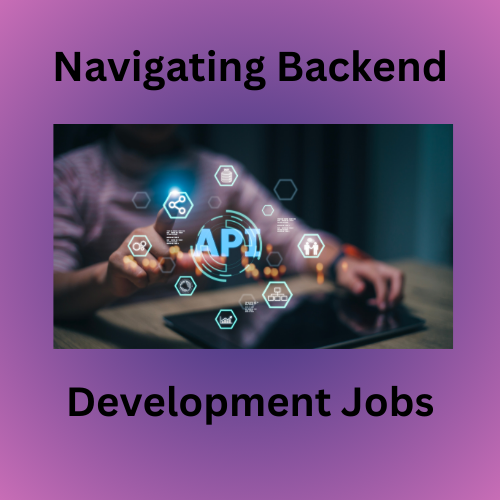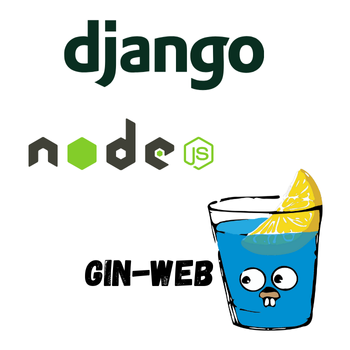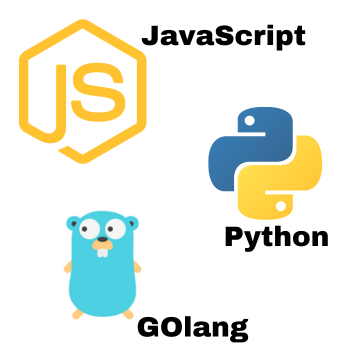Home > backend > Backend Development Jobs: Navigating Through its Required Tools, Skills, and Opportunities.
Backend Development Jobs: Navigating Through its Required Tools, Skills, and Opportunities.
Backend development job is not about writing code, you are to develop and maintain backend applications (services) with the right tools that position you for the right opportunities.
By :Thomas Inyang🕒 10 Mar 2025

Introduction.
Backend development is an important branch of ICT that powers fast, secure, and scalable applications (Servers). Organizations with ICT departments rely on skilled professionals to design and implement systems that drive their technology infrastructure, offering competitive salaries and flexible work options either onsite, remote, or hybrid.
In this guide, you will learn the following:
- How to develop the skills employers prioritize.
- How to effectively prepare for interviews in any setting (Onsite, Remote, Hybrid).
- Understand potential earning and negotiation strategies
Also, this guide will give you the insights needed to build a fulfilling backend development career that aligns with your professional and personal goals.
Is There Demand for Backend Developers?
Yes. There is an absolute high demand for backend developers. It is a highly in-demand field and if you are considering learning it, you'll be glad you did.
The rise of cloud computing, data analytics, and scalable architectures in ICT departments across various industries has spiked the need for backend engineers to build and maintain critical system designs.
Also, technology tools such as microservices, serverless computing, and AI integration are reshaping the ICT making the job demand very high.
Is It Easy to Get a Backend Developer Job?
Let’s be honest, getting a backend job it’s not a walk in the park, but it’s far from impossible. ICT firms are hiring, but they’re meticulous. Why? Because every employer wants developers who can solve real problems, not just write code. Here’s the good news: if you focus on what employers care about such as creating, maintaining, testing, and debugging backend applications or systems you can deliver and learning to think like a problem-solver—you’ll stand out.
For example, instead of just listing the programming language(s) you build with on your resume, create a small app that automates a task or you can contribute to an open-source tool. Show them you’ve worked tirelessly with real databases, experienced debugging nightmares, made contribution quota, and the role you played in the actualization of a backend service. This will prove your readiness for the Job and employers can’t ignore you.
How can I get hired?
How to Get Hired as a Backend Developer?
To get hired as an entry-level backend developer, you need to be prepared and be ready for interviews. Also, it's about proving you can solve real-world problems. But before you start sending those code emails or applying directly, you need the following to stand out among other backend developers:
Picking the Right Tools

This is a must-do. There are lots of backend tools but you need to focus on industry-standard programming languages such as Python (Django), Java (Spring Boot), or JavaScript (Express) which are great for APIs, or Golang (ideal for scalable systems).
See Also: How To Build a Powerful Restful API with Golang (Gin-web)
As backend developers, creating servers (Database) for the frontend to communicate with is your priority and you need to possess skills such as PostgreSQL for relational data (SQL), MongoDB for flexible NoSQL, and knowledge of cloud platforms like AWS or Azure will boost your value.
See Also: The Concepts and Roles of DBMS in Backend Development
Portfolio Development
Showcase your ability to solve real-world challenges by developing projects such as:
- A RESTful API for an e-commerce platform.
- A scalable microservices architecture using Docker and Kubernetes.
- Deploy these projects publicly and document your problem-solving process (e.g., GitHub repositories with detailed READMEs).
Strategic Networking
Networking is one way to get hired or be recommended for a job. Engage in communities that are specific to your backend stack, contribute to open-source projects on GitHub, attend tech events, and share your work publicly on social media. Doing these can position you for potential jobs.
Interview Readiness
After you've been contacted for an interview you need to practice for the following :
- Data Structures & Algorithms: You should try to solve platform-based challenges that focus on the domain you applied from (e.g., LeetCode).
- System Design: Practice scenarios like designing a URL-shortening service, the system's architecture, components, modules, interfaces, and data modeling.
- Behavioral Skills: Articulate past project challenges and solutions concisely.
Soft Skills
These skills will keep you on the job for a long time when you eventually get hired.
Let’s get real: coding skills might get your foot in the door, but soft skills will keep you. Backend development isn’t just about servers and syntax, it’s about surviving (and thriving) in the messy human side of tech. What are some of these skills?
Communication: This bridges the gap between explaining complex technical terms to non-technical stakeholders, like explaining server latency in terms of user experience.
Collaboration: This skill ensures that there is a seamless integration with frontend and DevOps teams.
Adaptability: With this skill, you can adopt new technology tools and adjust existing projects to meet industry standards.
Time management: Fixing tickets (issues, updates, features, etc) within a minimal time.
Problem-solving: The ability to turn abstract bugs into actionable fixes.
Active Listening: This means you're actually paying attention and not just waiting for your turn to talk. During this process, you should be taking note of how to reply or contribute possible solutions to the issues raised.
Feedback: Giving feedback is an art: you can add comments that would save the next person-hours of head-scratching. Feedback isn’t an attack; it’s free advice from someone who’s already stared at your code.
By aligning your preparation with employer expectations and industry trends, you position yourself as a competitive candidate in a dynamic field.
Remember: Companies hire problem-solvers, not just coders. Show them you’re both.
Can You Learn Backend Development in 3 Months?
It’s possible to get started in backend development within three months. If you're focused and ready to dedicate at least 4 hrs a day. You can pick a backend programming language and build a CRUD or a RESTful API at the end of the 3rd month. Here’s a suggested roadmap for you:
Month 1: Language & Basics: You can start by picking a language such as Python (Django/Flask), GOLang (Gin-web), or JavaScript (NodeJs). Learn these programming languages, their backend frameworks syntax and how they are used, HTTP basics, and build simple scripts (e.g., a CLI tool).
Month 2: APIs & Databases: In this month, you should have been familiar with your preferred language (framework) fundamentals. You can take the next step to build a REST API with a user authentication (JWT) endpoint. Still, within this month, you can further your learning by choosing a Database Management System (DBMS ) such as PostgreSQL (SQL) or MongoDB (NoSQL) that the API you created can connect to during CRUD (Create, Read, Update, Delete) operations.
Month 3: Real-World Projects: At this stage, you should start building projects that will feature in your portfolio such as an e-commerce API, and state and city postal code API, and deploy them in any server-side hosting service. Also, you learn Git and Github for ease of collaboration with other team members. Learn how to write documentation and mimic team workflows (e.g., Agile sprints via Trello).
When you are consistent during these months, you’ll not only have the necessary foundation but you are prepared to land an internship role.
Which Language Is Fastest for Backend Development?

The fastest programming language for backend development depends on your backend project requirements and limits. The following explains the features of famous programming languages for backend development:
Golang (GO):This a programming language for building a backend service that focuses on speed and efficiency, Go is a great option. It is recognized for its lightweight concurrency programming model based on goroutines. Go can handle large numbers of simultaneous jobs (thousands of requests at once) with minimum overhead, making it ideal for applications that require quick response times and effective resource management.
See Also: How to Set and Get Cookies In Golang.
Rust: This programming language is suitable for a backend service that requires high efficiency and safety. Rust's strict compiler checks ensure that near-low-level performance while avoiding typical memory issues is achievable. With these characteristics, you can build a high-performance backend service in which error prevention is equally crucial as speed.
NodeJS (JavaScript): This is a JavaScript programming language runtime environment. NodeJs is used to build real-time services (chat systems or live data streams). It's an event-driven, non-blocking I/O architecture that is used to efficiently manage asynchronous operations, ensuring that your backend service stays responsive even when heavily loaded.
See Also: JavaScript Asynchronous Programming Guide
In conclusion, when you want a programming language with pure speed and efficiency for your backend service, Go shines out. With Rust's fast performance and its strong safety measures, you can build high-performance backend service. While NodeJs thrives in real-time, asynchronous settings.
Your decision for the fastest programming language should be based on the needs of your project and the skills of your team members.
By taking these aspects into account, you may select a language that not only matches your performance requirements but also aligns with the overall project goals.
How Much Do Backend Developers Make?

Knowing the salary of backend developers before an interview will enable you to make the right negotiate in terms of payment and compensation.
The average backend developer salaries range from $81,000 for entry-level positions to over $120,000 for experienced professionals, with an average of $115,000 in the US [clarusway]. The job market is expanding by about 12% annually, with projected growth of 8% over the next decade due to digital transformation. With this significant growth, ziprecruiter tabulated backend devs' salaries by country and state.
According to The Business Research Company, the microservices architecture market size will grow from $6.27 billion in 2024 to $7.45 billion in 2025 at a compound annual growth rate (CAGR) of 18.8%. This is due to the rise of serverless computing, and AI integration, alongside cloud platforms like AWS, Azure, and Google Cloud.
You might also be concerned about the work environment and stress levels in backend roles.
Is a Backend Job Stressful?
Asking if a backend development job is stressful depends on these three key factors: your expertise (cloud infrastructure, database administrator, etc), how you manage your workload, and your workplace culture.
Also, there is no lone factor as to why a backend job is stressful, other factors can be soft skills issues such as tickets (error fixes or new features) deadlines, critical system outages, and high stakes in troubleshooting can contribute to stress.
However, with effective time management and a supportive team, you can maintain a healthy work-life balance.
Next, let’s talk about educational requirements and the foundational knowledge you need.
What Degree Do You Need to Be a Backend Developer?
Many ICT firms require a computer science or a related field degree. The backend development job is not only limited to degree holders, self-taught backend developers are doing well in this domain.
Employers prioritize problem-solving abilities, such as debugging failing APIs or improving slow database queries, and technical expertise in languages like Python, JavaScript, Rust, Java, or Go.
In short, a degree can open doors, but practical skills, a strong portfolio, and adaptability ultimately define success in backend development.
Conclusion
In this article, I shared some insight on backend development careers, such as: understanding the demand, what skills (coding and soft skills) are required by employers, and choosing the work model that fits your lifestyle.
Backend development isn’t just about writing code; it’s about solving problems that shape how the digital world works.
Please Share